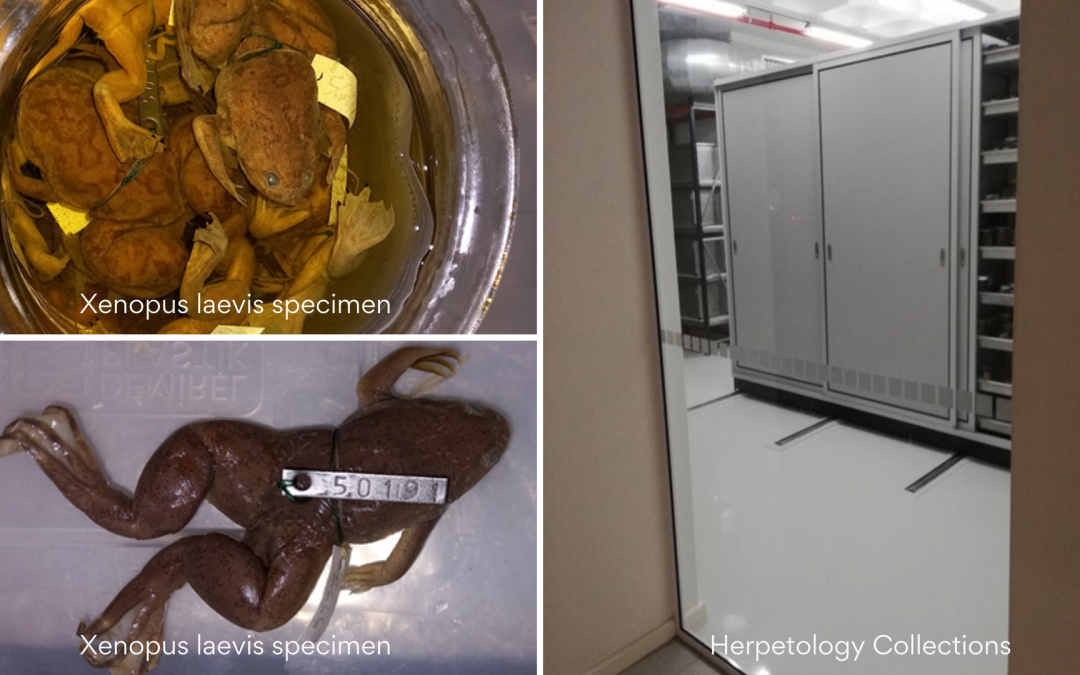Aisha Mayekiso, Iziko Museums of South Africa
Long before the 1970s, which is when the home pregnancy test was developed; women were subjected to all kinds of weird methods of detecting pregnancy. It is believed that the ancient Egyptian women would urinate on barley or wheat seeds and if the seeds sprouted quickly, then this is an indication of pregnancy. The Greeks in their methods used onions or strong-smelling vegetables to confirm pregnancy. The German scientists invented the rabbit test and injected the urine of pregnant women into sexually immature rabbits, rats, and mice, which would induce ovarian development.
During a recent behind-the-scenes tour, Jofred Opperman, the Collections Manager for the Terrestrial Vertebrate Collections, introduced us to a frog species known as the African clawed toad or platanna, Xenopus laevis. This species is easily bred and can live for up to 30 years in captivity and between 5 to 15 years in the wild. In the 1960s these frogs were used by doctors to do pregnancy tests known as Hogben tests. Doctors would ship urine samples of suspected pregnant women to frog labs where lab technicians would inject female frogs with urine samples in their hind legs. The frogs would be placed back into their tanks. In the morning technicians would check for tell-tale frog eggs dotting the water. If the female frog had ovulated, that meant the woman who provided the urine was pregnant and the pregnancy hormone, human chorionic gonadotropin, had engineered the ovulation process in the frog.
Museum collections are the link between the past and present times. These collections are an invaluable resource and provide great insight into the past and it is paramount that these collections are protected and properly curated, for future generations to come.
Pictures were provided by J. Opperman

